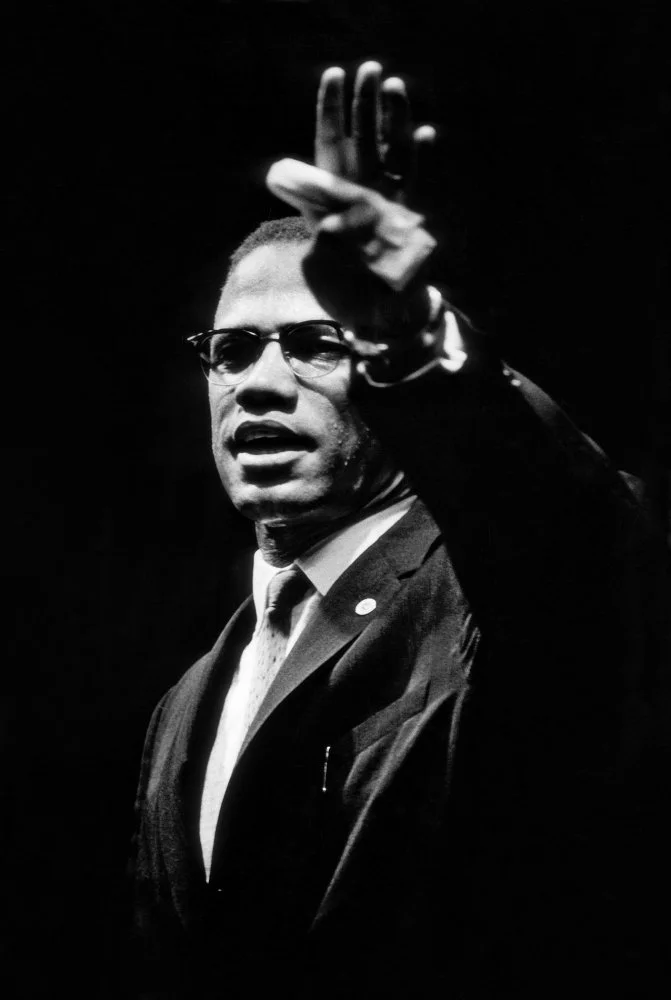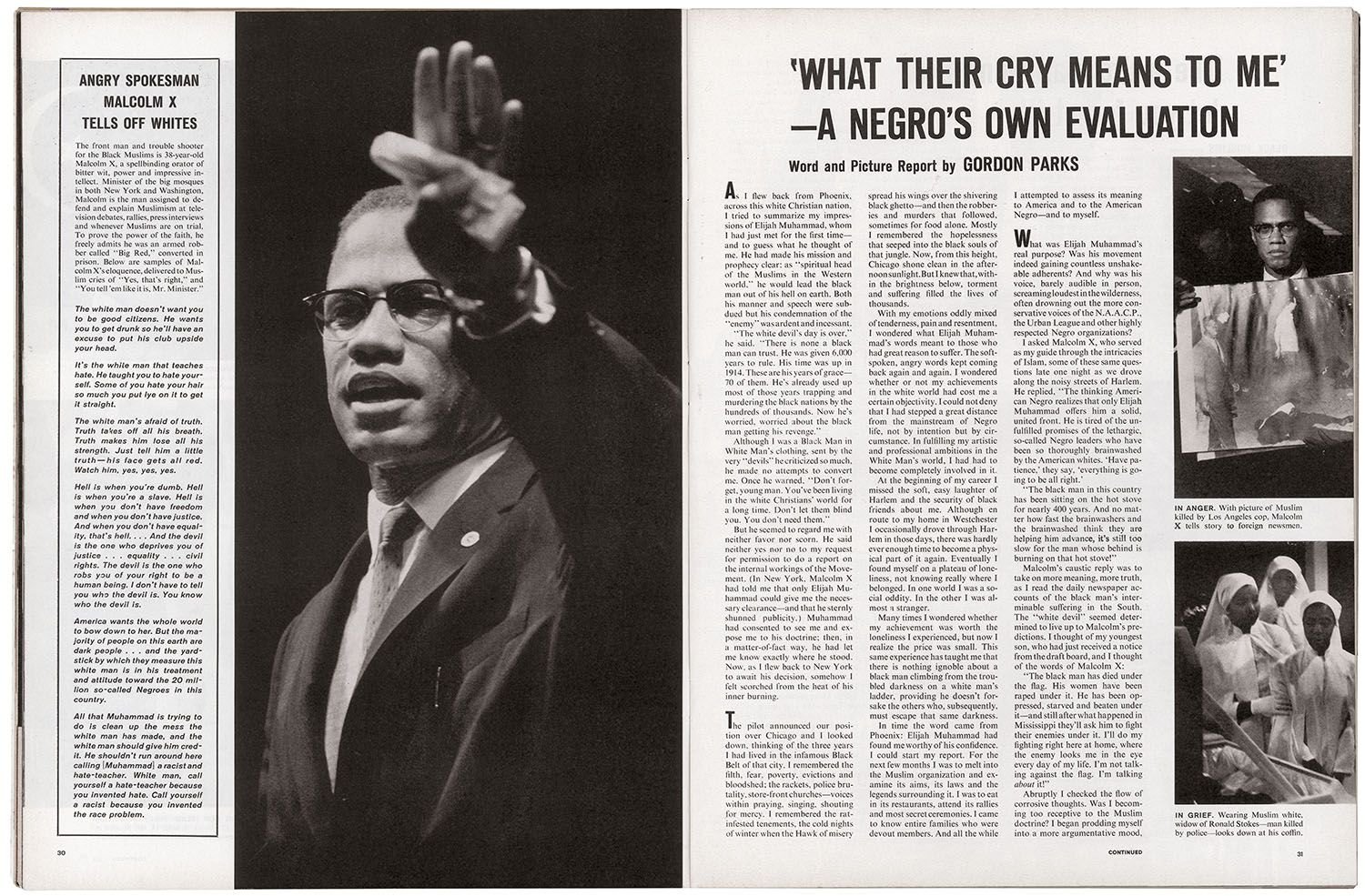Malcolm X by Gordon Parks in "Black Muslim's Cry Grows Louder", Life Magazine, May 31, 1963, p. 30-31 via the Gordon Parks Foundation.
Malcolm X (born Malcolm Little, later Malik el-Shabazz; May 19, 1925 – February 21, 1965) has come to be known as a revolutionary historical figure during the civil rights movement in the US—someone who challenged the notion of white supremacy in America, and who bravely advocated for Black empowerment.
In his time, he also became a target for largely white police forces that were created to establish the state by controlling Indigenous and Black populations.
“I don’t see any American dream–I see an American nightmare.”
He rose to prominence, especially thanks to his friend Gordon Parks, the first Black photojournalist in the United States, who worked for Life Magazine and created powerful portraits and images of Malcolm X that let him be seen as a human being during a time when he was demonized by a white society that wholeheartedly believed in the supremacy of whiteness.
“If you’re not careful, the newspapers will have you hating the people who are being oppressed, and loving the people who are doing the oppressing.”
Malcolm X holding a Gordon Parks newspaper clipping featuring an article that reads “Seven unarmed negroes shot in cold blood by Los Angeles police.”
In essence, Gordon Parks played an essential part in not only humanizing Malcolm X and his movement but also establishing a presence for the Black community in journalism.
“When I first started doing those stories, Life was not sure if I would be as objective as they would like, because I was Black, and I had a common interest with the Black revolution,” said Gordon Parks in a 1991 interview. That “common interest” of course being equity, equality, and the same freedoms and rights as every other American.
Of course, the entirely white, male journalism of the time did not ask the same question of themselves. Were they objective about matters of the Black community? Most surely not, for objectivity is a fallacy. Each of us comes to every situation with only our experiences and knowledge—which are almost always informed by our unique positionality—to guide us, making us limited when it comes to something like objectivity.
“We cannot think of being acceptable to others until we have first proven acceptable to ourselves.”
It is no surprise, therefore, that historian and author John Edwin Mason who is authoring a biography on Gordon Parks, speculates at the Photo Ethics Centre Symposium that the largely white male press was bent on demonizing the Black community and leaders such as Malcolm X simply since they clearly stood to benefit from patriarchy and racism.
“Objectivity was defined by white reporters and editors; that is to be objective was to see things through white eyes; and those selective truths have been calibrated to avoid offending the sensibilities of white readers,” states Mason.
Gordon Parks’ self-portrait, taken in 1948 via the Gordon Parks Foundation.
Mason also shares that in 1979 Parks said “It would be hard not to betray myself, to remain faithful to my emotions when facing the controversial issues of Black and White. I was a journalist first, but I would have to remain aware that being true to my own beliefs counted even more. I would have to bear the anguish of objectivity…”
It is clear that the standards of objectivity are painfully problematic for Parks then, as they are for BIPOC journalists and storytellers today.
It is crucial that we look to the past to understand the roots of what is taking place today so that we can be more intentional in designing the path forward.
Our community partners Black Women Photographers aim “to disrupt the notion that it is difficult to discover and commission Black creatives. Dedicated to providing a resource for the industry’s gatekeepers.”
This Malcolm X Day, help create equity in the photography industry by donating to Black Women Photographers.







